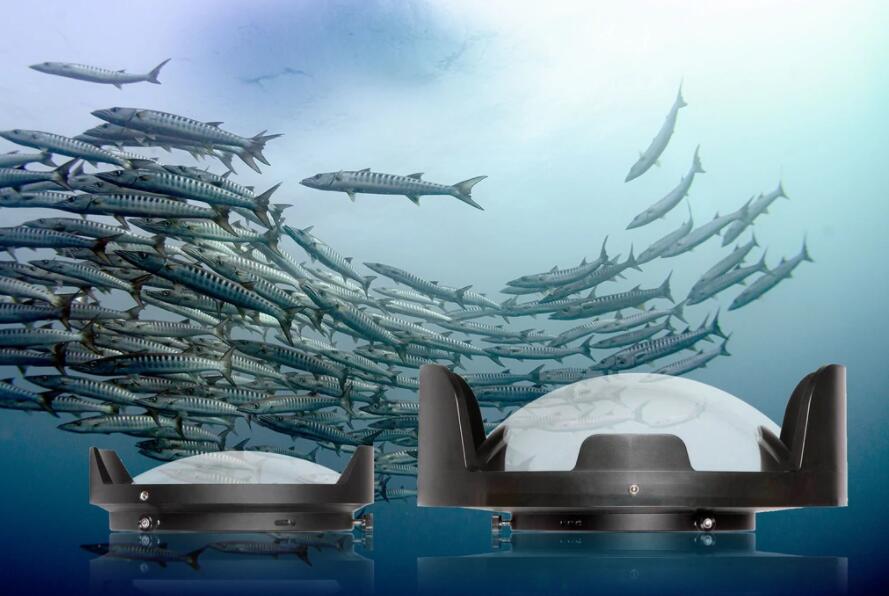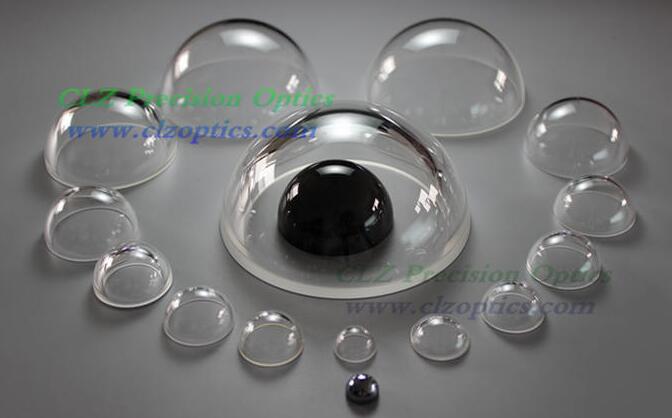WHEN TO USE A COMPACT 8" DOME PORT UNDERWATER
Dec. 24, 2021
Domes are essential underwater when shooting wide angle and zoom lenses. A flat port magnifies objects the same way your dive mask does, and it turns into a port hole when shooting wide lenses. The dome allows your camera to see the full angle of view, in most cases with no vignetting.
What is a Compact 8" Dome?
Domes can come in a variety of sizes, typically from 4" (100mm) diameter up to 10" (250mm) diameter or larger. Larger diameter domes provide better edge sharpness and less aberrations when using a rectilinear lens. Smaller diameter domes are easier to dive and travel with.
Our Compact 8" Dome is made from a section of a larger 8" diameter dome, blending the advantages of smaller and larger domes.
Ease of Travel
Certainly the first reason to choose a DL Compact 8" Dome Port is paring down your kit. The compact dome packs better. It can stand up vertically in most hard cases or you can travel with it attached to the housing. There's significantly less surface area to pad and protect from damage. Both our compact and full size 8" domes have the advantage of being over 4.5 pounds (1.7 kilograms) lighter than their glass counterparts with no significant reduction in image quality.
Handling
A more important advantage is the handling of the system. In some cases the buoyancy of the big dome can help make your system closer to neutral buoyancy and easier to handle. But it can also cause a continuous twist as the more buoyant dome port tries to float upward. The compact dome is closer to neutral buoyancy, which reduces the arm fatigue and may eliminate the need for trim weights.
Moving a few inches closer to the subject with a wide angle lens changes the perspective a lot. Remember that we are often holding our housing and strobes out in front of us to try and get the lens close to the subject without touching anything. Being able to support the system and capture an image with one hand can make a big difference.
Reduction of Drag
The drag of your system may seem like a fixed variable. But larger domes create significantly more drag. There is a noticeable difference when free diving, swimming against a current, or following fast moving subjects with a compact dome port.
Getting Close
Super wide lenses are capable of focusing right on the front of the port. You can fill the frame (or a good portion of it) with very small things. To do this you need to be right on the dome. A difference of an inch can almost double how much of the frame your subject occupies. You can get over 1-1/2" (38mm) closer to your subject with the compact dome.

Edge Sharpness
Edge sharpness is a function of many factors including the quality of your lens, the aperture you're shooting at, the amount of light, the size of the dome and its distance from the nodal point of the lens.
As for corners and edges, the additional distance of a full size 8" dome from the front of the lens will decrease aberrations. The significance of this is generally less noticeable than other things that you can do to improve edge sharpness -- most importantly shooting with a good lens and more light at a smaller aperture. Long zoom lenses and inexpensive kit lenses are some of the worst culprits for soft edges. These differences can also be offset by reducing the distance between your subject and your lens, which is possible with a compact dome.
When comparing the full size and the compact 8" dome on a specific lens, for example an 8-15mm Fisheye, it's difficult to discern the difference. It's unfortunate that the dome isn't recorded in the metadata, because unless I specifically added a keyword to the image I can't tell which were shot with a compact dome vs. a full size. I'm also not sure I've ever seen an otherwise amazing image that made me say "Oooh... if only those corners were sharper."
Conclusion
So why not make the jump? There is an argument that larger domes provide sharper corners, edges, and even better color saturation... Although you may not be able to find this in your images. If you are shooting video, large animals, or models, your corners may not matter much to you anyway.
Over-under shots (half-in, half-out of the water) at the surface are more easily accomplished with larger domes. The increased surface area of the larger dome makes it easier to control the water line.
The Compact 8" Dome Port is the clear winner for ease of travel and handling. It's hard to beat a port that measures only 6.2" diameter x 1.8" length (158 x 46mm) and weighs in at just 8.1 oz (230g). And unless you're doing reef surveys, you may not even notice a difference in edge sharpness. The Compact 8" Dome is definitely our preference when shooting animals like dolphins and whales, or when shooting models in either the pool or open water. It's also small enough that you could travel with both!



















